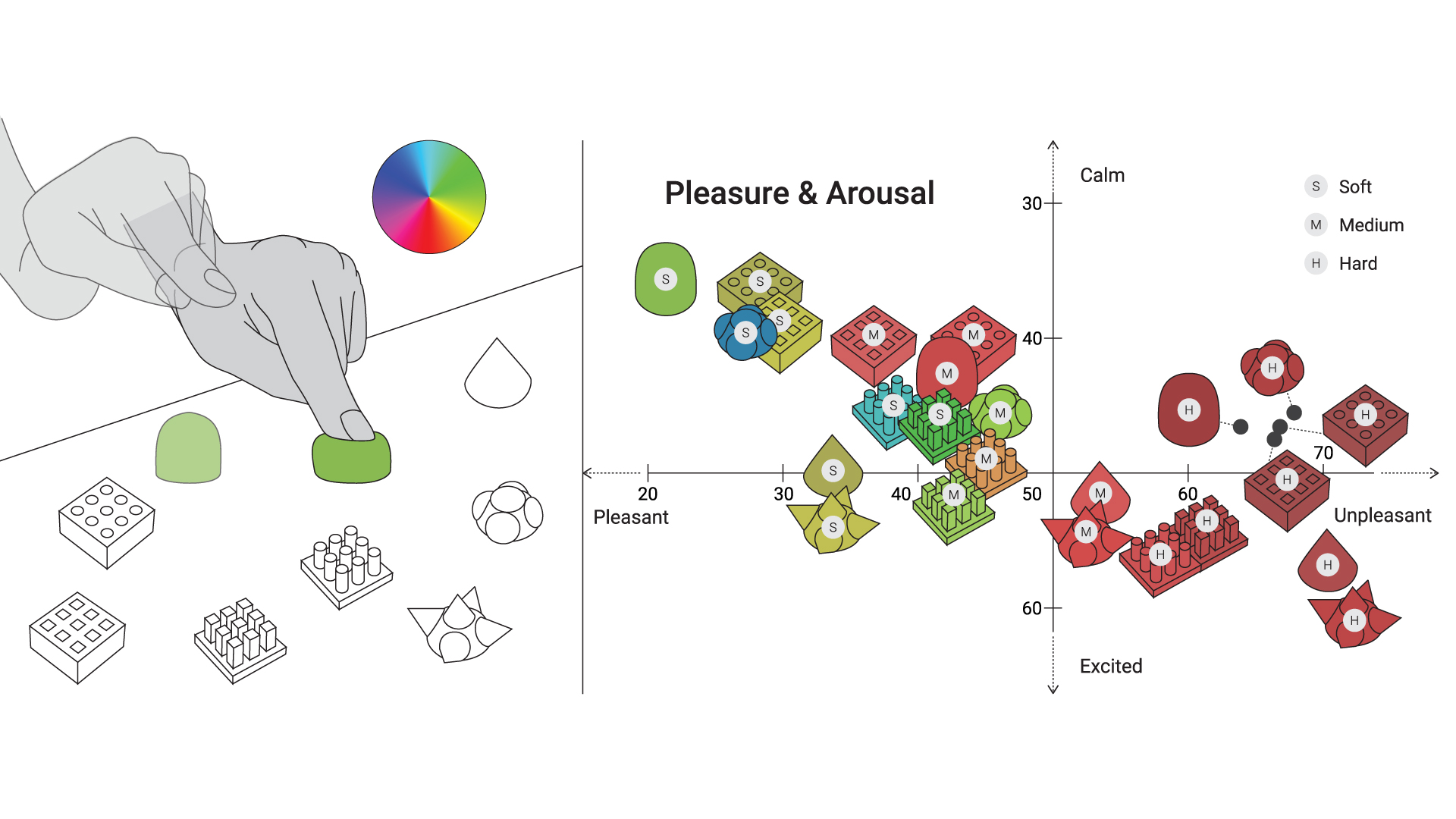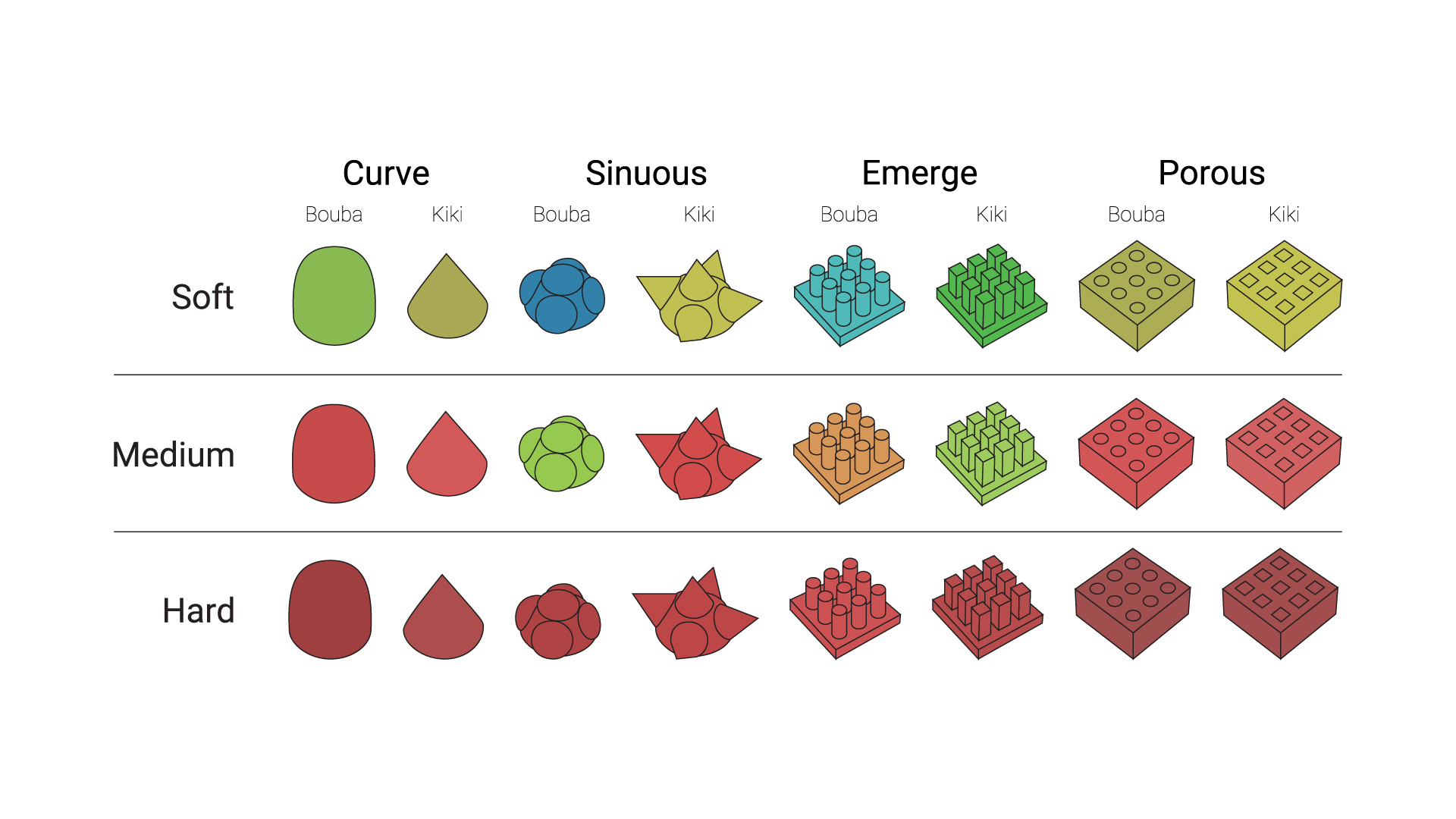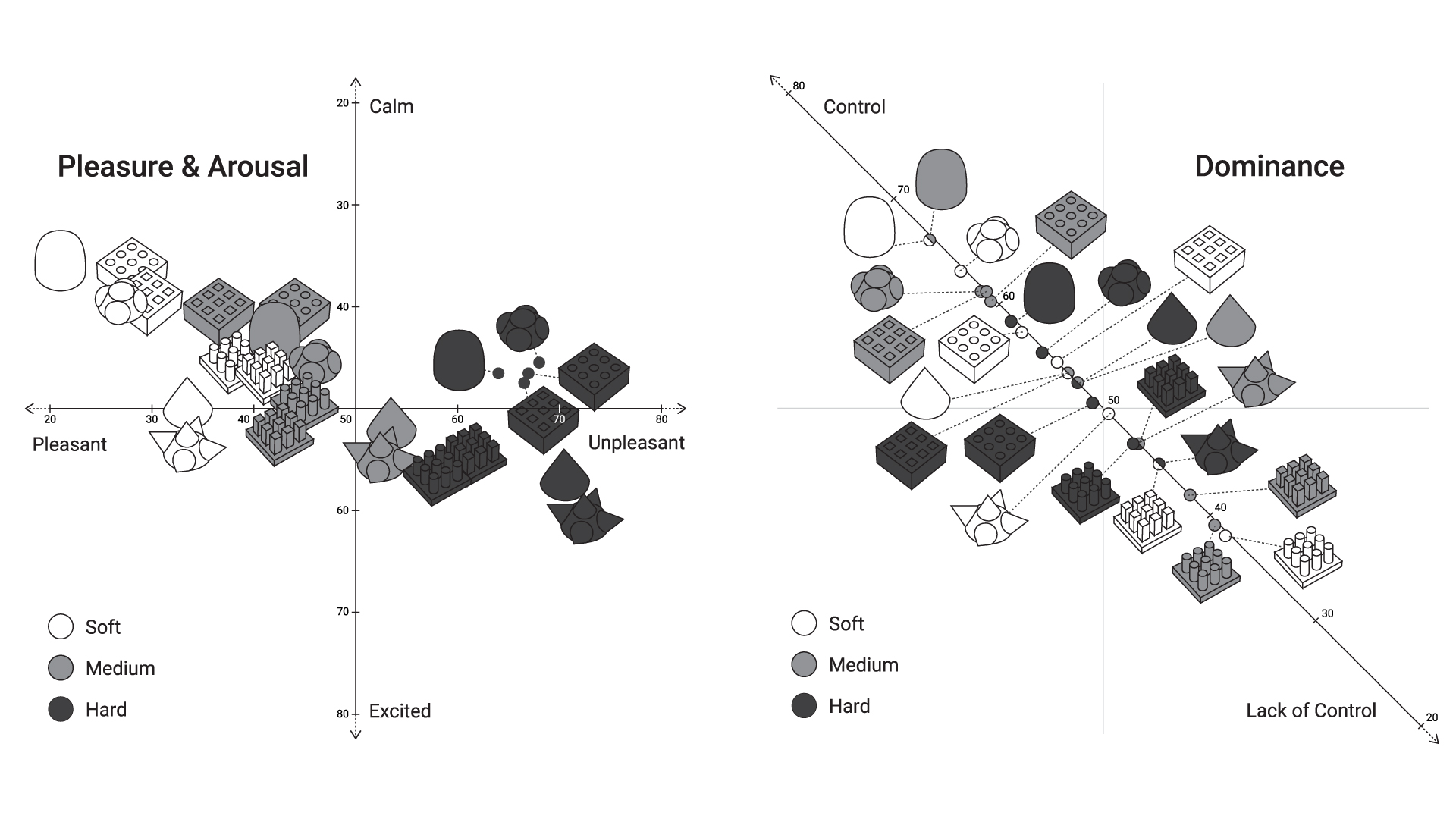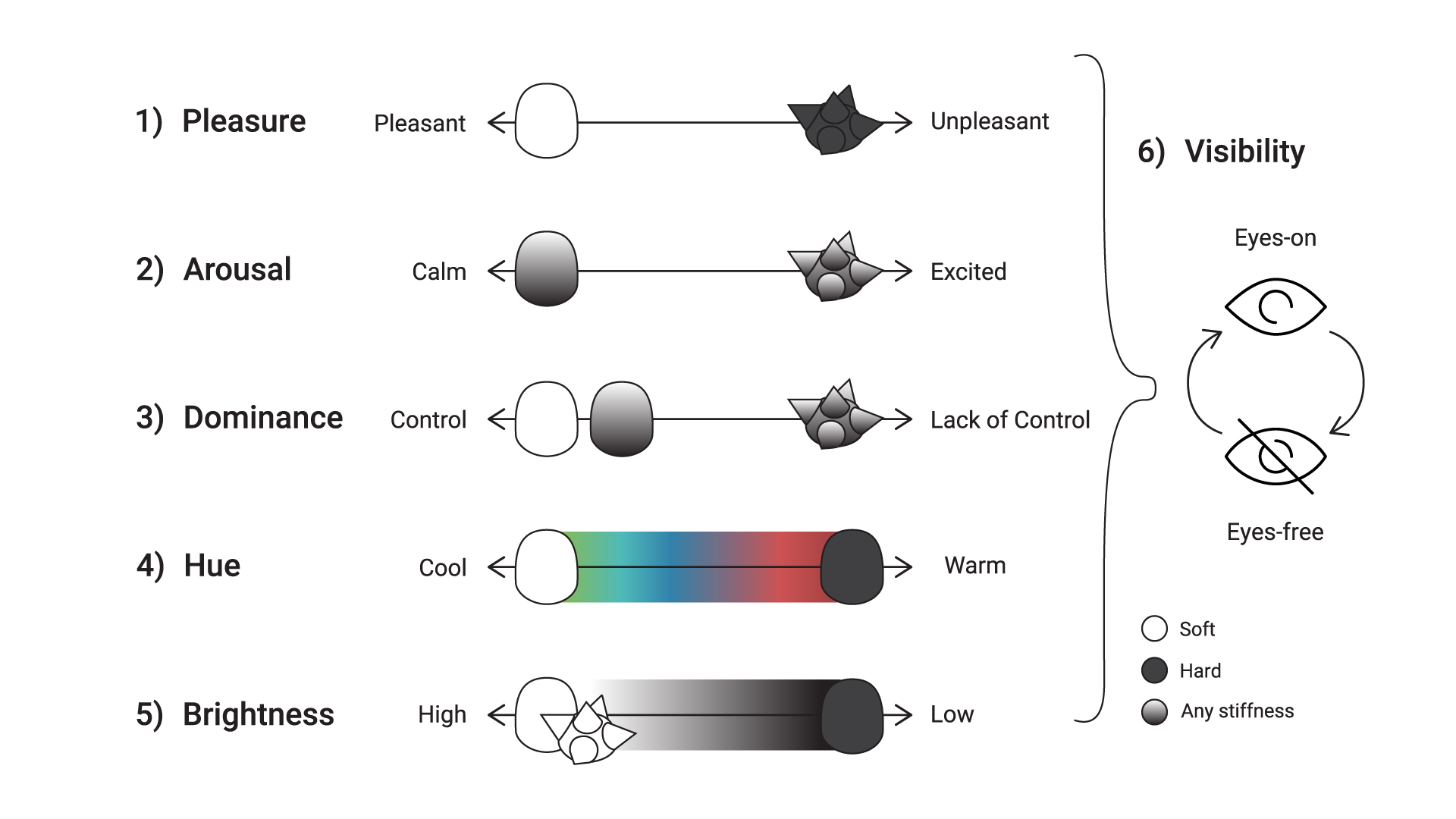Overview
- Conference: CHI 2024
- Type: Full paper
- Goal: Systematically explore deformable shapes' cross-modal correspondences with colors and emotion.
People
Cameron Steer, Kim Sauvé, Anika Jain, Omosunmisola Ibukunoluwa Lawal, Michael J Proulx, Crescent Jicol, and Jason Alexander
University of Bath
Abstract
Surfaces with deformable and shape-changing properties seek to enhance and diversify tangible interactions with computing systems. However, we currently lack fundamental knowledge and user interface design principles that connect the inherent properties of deformable shapes with our human senses and cognitive associations. To address this knowledge gap, we systematically explored deformable shapes' cross-modal correspondences (CC) with colors and emotions. In our CC study, 52 participants were presented with deformable shape stimuli that varied in stiffness and angularity. They were asked to associate these stimuli with colors and emotions under (i) visuo-tactile and; (ii) tactile-only conditions. For the first time, our findings reveal (1) how stiffness level primarily influences the CC associations and; (2) that stiffness and angularity play a significant role in CC associations over the visibility of the shapes. The results were distilled into design guidelines for future deformable, shape-changing interfaces that engage specific human senses and responses.
 We explored how people associate colors and emotions with deformable shapes of various stiffness (soft, medium, and hard) and angularity (Bouba, Kiki) (left). Results from the study (right) show crossmodal correspondences between the deformable shapes for colors (hue and brightness) and emotions (positions along the axes from 0-100).
We explored how people associate colors and emotions with deformable shapes of various stiffness (soft, medium, and hard) and angularity (Bouba, Kiki) (left). Results from the study (right) show crossmodal correspondences between the deformable shapes for colors (hue and brightness) and emotions (positions along the axes from 0-100). The four Shapes used in the study (columns: Curve, Sinuous, Emerge, and Porous) for each of their Angularity’s (rows: Kiki, Bouba). Each shape was cast three times at the three Stiffness levels. The image shows the Medium stiffness versions of the shapes.
The four Shapes used in the study (columns: Curve, Sinuous, Emerge, and Porous) for each of their Angularity’s (rows: Kiki, Bouba). Each shape was cast three times at the three Stiffness levels. The image shows the Medium stiffness versions of the shapes. Overview of shapes for each Angularity (columns: Bouba, Kiki), and Stiffness (rows: Soft, Medium, Hard) and associated color values (for median Hue and average Brightness value) selected by the participants.
Overview of shapes for each Angularity (columns: Bouba, Kiki), and Stiffness (rows: Soft, Medium, Hard) and associated color values (for median Hue and average Brightness value) selected by the participants. Overview distribution of emotion associations with deformable shapes across both Visibility conditions. Each of the emotions is plotted on the axes from 0 to 100. Left: the shapes plotted for pleasure and arousal. Right: the shapes plotted for the dominance scale.
Overview distribution of emotion associations with deformable shapes across both Visibility conditions. Each of the emotions is plotted on the axes from 0 to 100. Left: the shapes plotted for pleasure and arousal. Right: the shapes plotted for the dominance scale. Visual overview of the design implications of using shape (exemplified by a Kiki and Bouba shape) and stiffness (soft, hard, or any stiffness) for association with emotion and color. For example, (1) indicates soft rounded shapes (white Bouba) are best for eliciting pleasant associations (left), whereas harder spiky shapes (black Kiki) with more unpleasant associations (right). Design recommendation (6) demonstrates that associations and recommendations (1–5) can be used identically in eyes-free and eyes-on contexts.
Visual overview of the design implications of using shape (exemplified by a Kiki and Bouba shape) and stiffness (soft, hard, or any stiffness) for association with emotion and color. For example, (1) indicates soft rounded shapes (white Bouba) are best for eliciting pleasant associations (left), whereas harder spiky shapes (black Kiki) with more unpleasant associations (right). Design recommendation (6) demonstrates that associations and recommendations (1–5) can be used identically in eyes-free and eyes-on contexts.